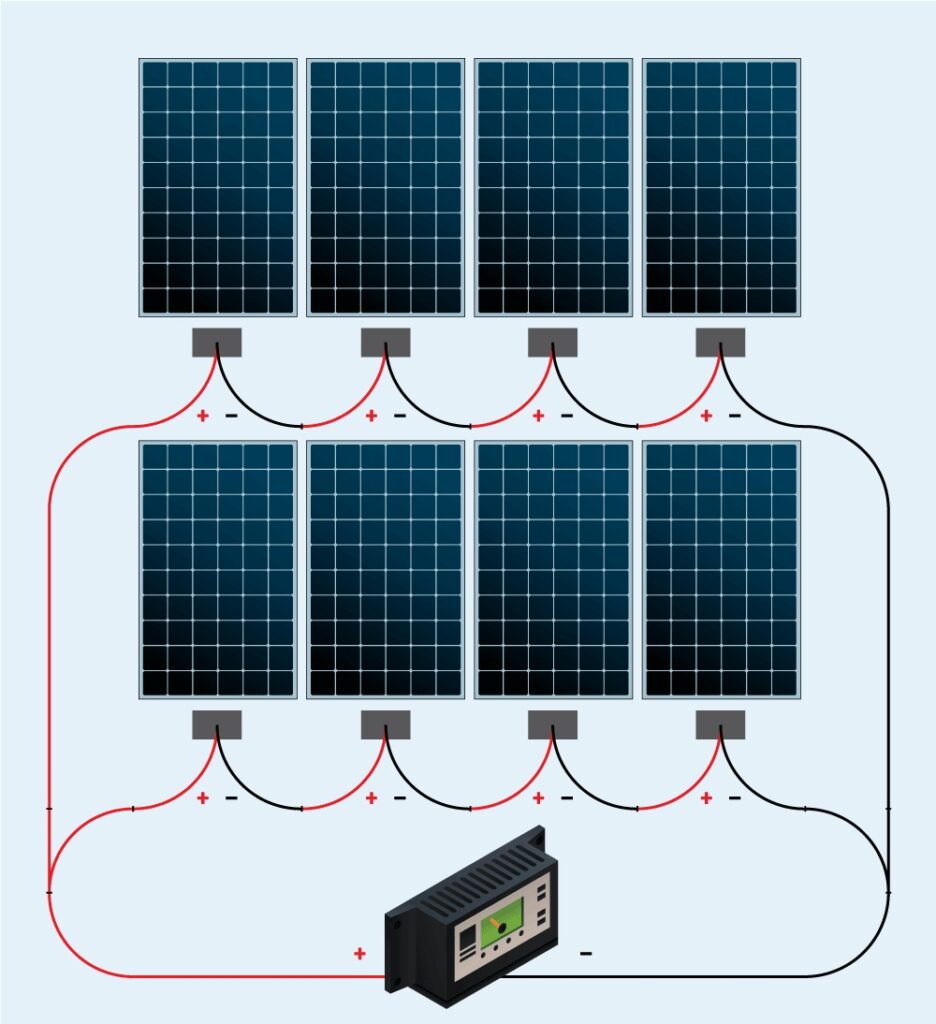When connecting multiple solar panels, it’s essential to pay attention to several factors to ensure optimal performance, safety, and longevity of your solar power system.
- Panel compatibility: Ensure that all the solar panels you are connecting are compatible with each other. Panels with similar voltage and current ratings are generally easier to connect.
- Panel orientation and tilt: Align all the panels in the same direction and at the same angle to maximize energy production. This is particularly important for systems with fixed panels.
- Wiring and connections: Use appropriate wire sizes and connectors to minimize power losses and ensure safety. Avoid using undersized wires that can cause voltage drops or overheating.
- Series vs. parallel connection: Understand the difference between series and parallel connections. Series connections increase the voltage output, while parallel connections increase the current. Choose the connection type based on the requirements of your system.
- Voltage matching: Ensure that the voltage output of the panels matches the requirements of the charge controller, inverter, or any other components in the system. Mismatched voltages can damage the equipment.
- Overcurrent protection: Incorporate overcurrent protection devices, such as fuses or circuit breakers, to prevent damage to the panels and other system components in case of a short circuit or overloading.
- Grounding: Properly ground your solar panels and associated equipment to protect against electrical faults and lightning strikes. Follow local electrical codes and regulations for grounding requirements.
- Shading issues: Minimize shading on the panels as it can significantly reduce the overall power output of the system. Even partial shading on one panel can affect the performance of the entire array, especially in series-connected systems.
Before connecting multiple solar panels, it’s advisable to consult with a professional solar installer or an electrical engineer to ensure that the installation is done correctly and complies with local regulations and safety standards.


